EV road trips aren't rocket science: here are 5 tips for successful liftoff
The journey is a trip
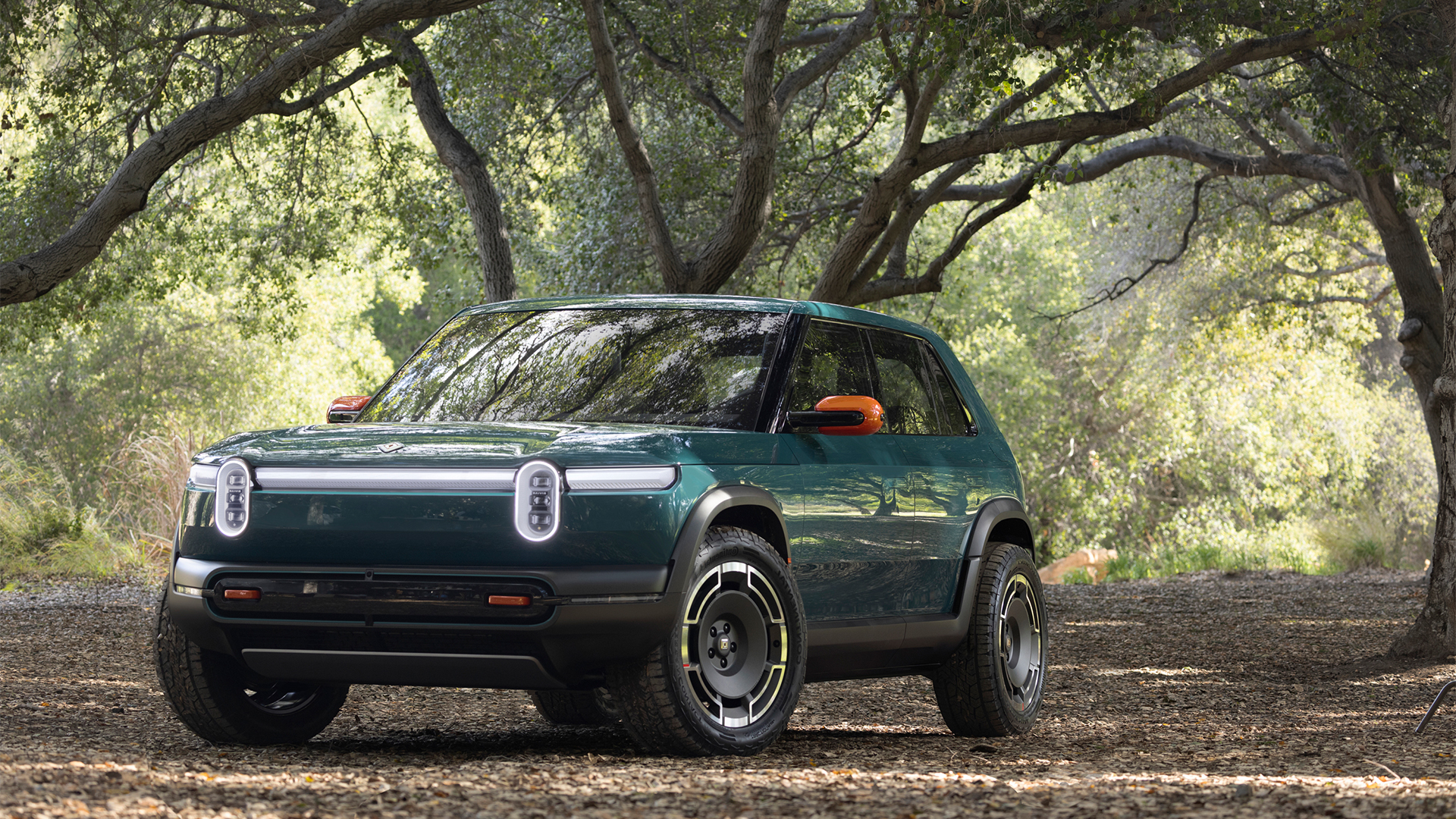
Much has been written about EVs and road trips – or rather, about how EVs aren’t suited for road trips. Well, I’m here to tell you that this simply isn’t true. I’ve been driving EVs for six years now, and happily road-tripping in EVs for just about as long. And I’m not the only one: right now, as you’re reading this, thousands of folks are crisscrossing the country in their EVs, trouble-free, without giving it a second thought.
Obviously, unless you drive a Tesla or Rivian, road-tripping in an EV isn’t as straightforward as jumping in a gas vehicle and driving off. That’s just the reality right now – at least at the time of writing. What matters is that things are improving rapidly thanks to better-charging infrastructure (like Supercharger access) and better route planning software. For now, here are five tips for EV road trip peace of mind.
Install all the apps, join all the networks
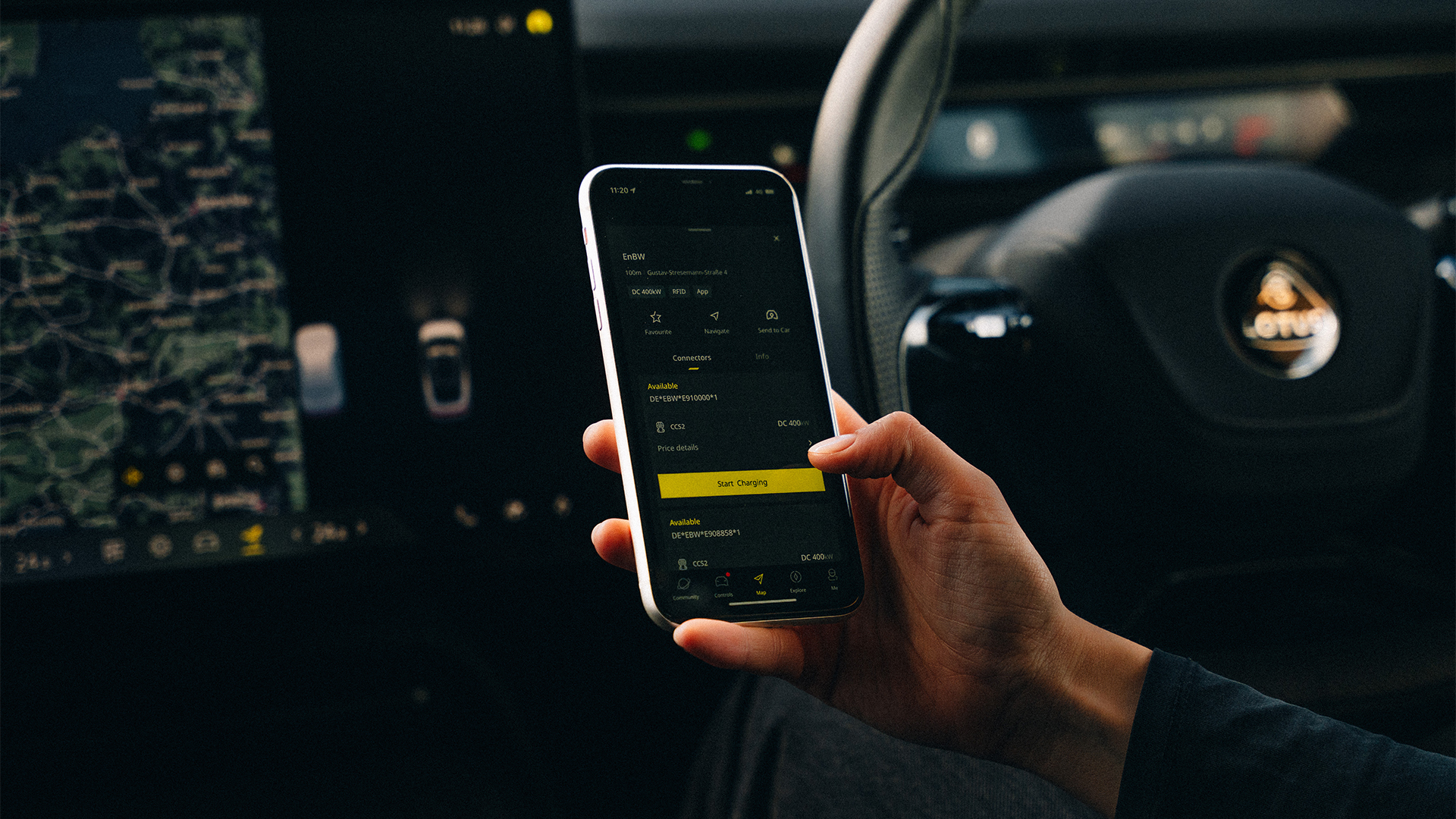
Just like there are multiple gas station brands, there are multiple charging networks. Unlike gas stations, charging networks don’t take cash, and some don’t even have card readers. But all charging networks have smartphone apps that allow you to pay by signing up and registering a credit or debit card. So go ahead: install all the apps, join all the networks, and make sure to set up a payment method for each of them.
Major charging networks include Tesla (Superchargers), Electrify America, EVgo, ChargePoint, and Blink. In some regions, electric utilities have their own networks and apps (like BC Hydro in Canada). So if you travel a lot in those regions, install those apps and join those networks, too. The more apps you install and networks you join, the better. Install them ahead of time so you don’t have to fumble at the charging station.
Another couple of essential EV apps to install are PlugShare (iOS, Android, web) and A Better Route Planner (iOS, Android, web). PlugShare curates detailed information about charging stations nearby, at your destination, and anywhere in between. A Better Route Planner is a route-planning app designed specifically for planning EV road trips. Pro tip: create a folder on your phone to collect all those EV apps. You’re welcome.
One more thing: most EVs also come with a smartphone app that lets you monitor charging, adjust the climate, unlock the car, open the trunk, access various other controls (like the horn or the lights), locate your car on a map, and more – all remotely, from anywhere in the world This app often turns your phone into a car key as well. You’ll want to install it and connect it to your EV so you can receive notifications.
Get in tune with your EV

Getting to know your EV helps. What’s your EPA range? What’s your actual range from 20-80%? How does temperature affect your range? Is your EV’s range prediction too optimistic or too conservative? What’s your peak DC fast charging speed? How long does it usually take to charge from 20-80%? Does your EV use LFP (Lithium Iron Phosphate) batteries that can repeatedly be charged to 100%?
Get daily insight, inspiration and deals in your inbox
Sign up for breaking news, reviews, opinion, top tech deals, and more.
If your eyes just glazed over, don’t worry. You don’t need to have answers to these questions to do an EV road trip, but knowing these things can be useful. Look at it this way: you probably roughly know how far you can drive your gas car on a full tank, and what kind of fuel it takes, (regular, premium, diesel), right? You might even know your vehicle’s fuel consumption (mpg). Same thing here, but with electrons instead of dino juice.
To be clear, some of this information can only be gathered after spending some time road-tripping. At a minimum, learn your EV’s real-world 20-80% range so you can estimate how often you will need to charge, and your EV’s best-case 20-80% charging time, so you can estimate how long you will need to charge. Make sure you also know your EV’s top charging speed (in kW) so you can pick the right charger.
A little bit of planning goes a long way

Chances are that when you road trip in your gas car, you do some basic planning. You probably have an idea of how many miles you’re going to drive each day, and where you are going to stop overnight. Perhaps you even have a specific stop in mind along the way, for some sightseeing. But you don’t usually plan where you’re going to stop to get fuel, use the restroom, grab some food, or take a break.
Things are basically the same with EV road trips, except that you’re also going to plan your DC fast charging stops and use them as an opportunity to go to the bathroom, eat something, or relax a little. With today’s best EVs, you typically drive 100-200 miles (1.5-3 hours), then stop to charge for 15-30 minutes. Some people like more frequent stops with shorter charging breaks, while others prefer fewer stops with longer charging breaks.
This is where route planning software comes in. You can either use your EV’s built-in navigation screen or (better yet) an app like A Better Route Planner (iOS, Android, web). While the infotainment system in most EVs includes some kind of route planning functionality, only Tesla and Rivian are doing this well so far. Obviously, this will improve as more EVs get access to Tesla’s Supercharger network.
EV route planning isn’t trivial. A wide variety of inputs need to be considered, like your EV’s real-world range, your battery’s current temperature and charge level, your driving style, variables such as traffic, weather, and terrain, plus charger availability along the way. This means getting access to real-time data from multiple sources, like your EV and the charging networks, and updating the route as needed.
Decent route planning software will also let you add sightseeing and overnight stops. And if you are going to stop for more than 30 minutes for something other than planned DC fast charging, try to find a nearby charger using PlugShare (iOS, Android, web). Even a slower level 2 charger can add 25 miles of charge per hour, and those are often free. Also, try to book hotels with level 2 chargers, so you can wake up to a full charge.
Finally, if your route planning software does not support real-time data from the charging networks, you’ll want to fire up those network-specific apps as you get within 20-30 miles of your next charging stop to check for charger availability and reroute to another nearby charging station if necessary. This will avoid getting to a charging station only to find out that there’s a line or that the available chargers are out-of-service.
Also, don’t forget to read my tips for charging your EV smarter. Battery preconditioning is critical to achieve the fastest charging speeds and spend less time DC fast charging. While some EVs do this automatically when you select a charger in the navigation screen, other EVs have a setting for it in the menus. Either way, it’s a good idea to enable this feature when you get about 20-30 miles from your next charging stop.
Tesla and Rivian drivers have an edge

If you’re driving a Tesla or Rivian, you’re in luck. Both offer excellent route-planning software built right into the infotainment system. Tesla provides the most seamless experience here, thanks to its tight vertical integration of hardware, software, and services – including its own Supercharger network. In a Tesla, you can basically punch a destination into the navigation screen, and enjoy a worry-free journey.
Rivian comes in close second, with solid route planning software built in and support for the Supercharger network. But Rivian’s route planning software does not currently account for charger availability. I suspect this will be coming at some point in the near future. On the flip side, Rivian’s route planning software includes most of the major charging networks, unlike Tesla, which only knows about Superchargers.
While Ford EVs now also have access to Tesla’s Supercharger network, the company’s built-in route planning software doesn’t currently include Superchargers. It only works with Ford’s BlueOval Charge Network, which aggregates most of the other charging networks. As such, if you’re driving a Ford EV, I strongly recommend using an app like A Better Route Planner. You’ll have a much better experience.
Be smart about charging
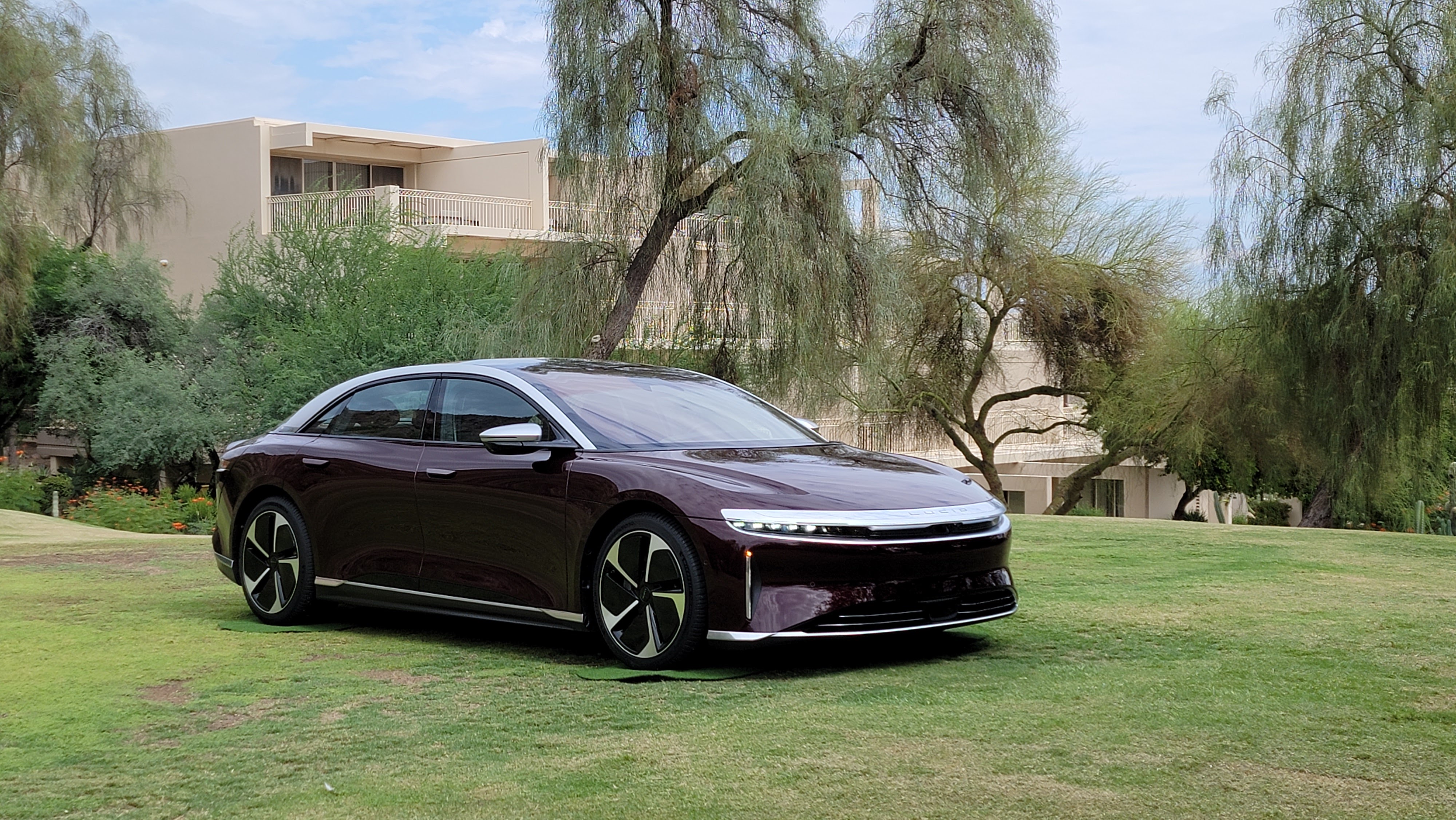
Once you arrive at your charging destination, be sure to pick the charger that’s most appropriate for your EV. If your EV’s max charging speed is 150kW or less, don’t plug into a 350kW charger when a 150kW charger is available. Leave that 350kW charger free for faster charging EVs. Yes, I’m looking at you, 55kW Chevy Bolt drivers. Be courteous – don’t prevent a 300kW Lucid Air from gobbling down those electrons.
Also, It's a good idea to set your charge limit to 80%. I’ve written about this before, but while charging your EV from 10 to 30% might only take five minutes, charging it from 80-100% will take 20 minutes or even longer on the same DC fast charger. So you’re better off getting back on the road instead of wasting everyone’s time. Not to mention, charging to 80% is healthier for the vast majority of EV batteries.
Now plug in and chill. Depending on your EV and charging network, charging will either start automatically (plug-and-charge), or by activating the charger using the network’s app, or by launching the network’s app and tapping your phone on the charger’s NFC reader. Charging progress can be checked remotely on the network’s app and on your EV’s app, and you’ll receive charging status notifications.
Enjoy your charging break, but don’t go too far – all charging networks charge idle fees (typically $0.40 to $1.00 per minute) if you don’t unplug your EV once charging is complete. While there’s usually a grace period of 5-10 minutes before the idle fees kick in, it’s important to unplug your EV and move along as soon as possible. So obviously, you’ll want to keep an eye on those charging status notifications.
Pro tip: you can keep the inside of your car cool in the summer and warm in the winter by turning on the climate with your EV’s app while you’re charging. Not only will this keep the inside of your car at a comfortable temperature while you’re away, but it will also maximize your range since you won’t be wasting energy cooling or heating your EV back to the right temperature once you get back on the road.
Charging is an opportunity, not a chore
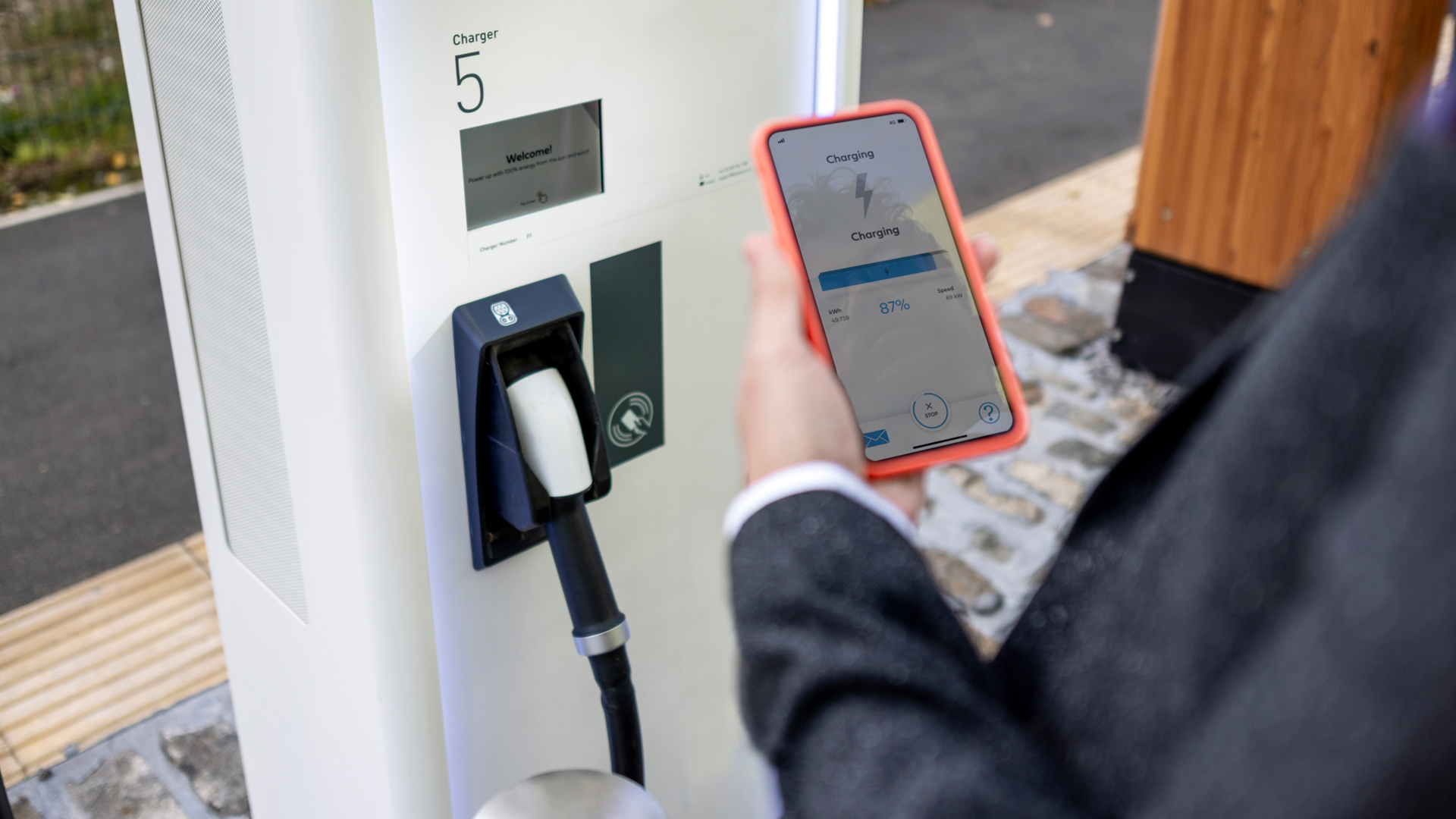
So what can you do while you’re charging? Go to the restroom, eat some food, check your email, make a video call, watch videos (some EVs have Netflix, YouTube, and more on the center screen), play video games (some EVs also have games in the infotainment system), read a book, go shopping, walk around, talk to other EV owners – the list goes on. Invariably, you’ll be surprised how quickly charging is complete.
Then you’ll get back on the road only to look forward to the next charging stop. Because that relaxing pace is addictive and contagious. That’s the (not so) secret allure of EV road trips: you actually learn to value those charging breaks. And when you’re new to EV road trips, charging stops are the dopamine hit, the release you get after the stress of watching that battery meter drop for hours while you drive.
Wrapping things up, let’s talk about charging destinations. Most charging stations are in the back of parking lots, walking distance to malls, box stores, fast-food restaurants, hotels, or gas stations with bathrooms. That means two things. First, it’s rare to find anything healthy to eat near charging stops, and second, if you're traveling in the evening or at night, these amenities – and bathrooms – might be closed.
To get around this, simply launch the maps app on your phone when you get about 20-30 miles from your next charging stop and see what other restaurants and facilities are open and available in the area. You might be able to find better quality food (to go) ahead of that charging destination – and even a rest area, truck stop, or gas station – so you can grab something to eat or visit the bathroom before you stop to charge.
EV road trips easier than you think
As you can see from these five tips, EV road trips aren’t really difficult. Mostly, you just need solid route planning software – whether you’re using an app like A Better Route Planner or punching a destination into Tesla and Rivian’s excellent infotainment system. Yes, it is different from road-tripping in a gas vehicle, and there’s an initial learning curve, but you’ll quickly wrap your head around it, and it will become second nature.
What’s more important is that driving EVs – whether around town or on a road trip – requires a different mindset. You need to stop thinking of charging as a chore, but see it as an opportunity. Once you embrace that, road-tripping in an EV becomes a delightful experience, and range anxiety fades away.
You might also like
- EV batteries get a boost with next-gen packs that charge in under ...
- 5 must-have features to future-proof your first or next EV purchase ...
- Inside the new Porsche Macan – the Android-powered EV that's ...
- The best EV and car tech of CES: from Honda, BMW ...
- Volkswagen and Mercedes announce EV gaming upgrades to help ...
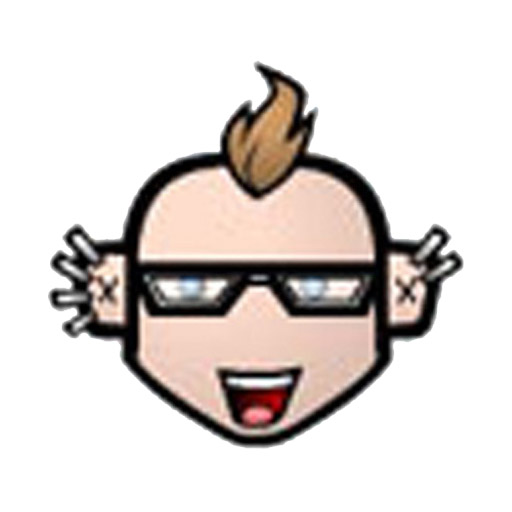
Myriam Joire (tnkgrl) was born wearing combat boots and holding a keyboard. Moments later she picked up a soldering iron. On weekends, she rally-raced with her father. She's been stomping, typing, hacking, and driving ever since. After spending years being a code-monkey in the video game industry, she joined Engadget as Senior Mobile Editor and later Pebble as Chief Evangelist. Today she hosts the weekly Mobile Tech Podcast, makes videos on YouTube, writes about tech and cars for TechRadar and other major publications, and advises startups on product/media strategy. She's based in San Francisco.